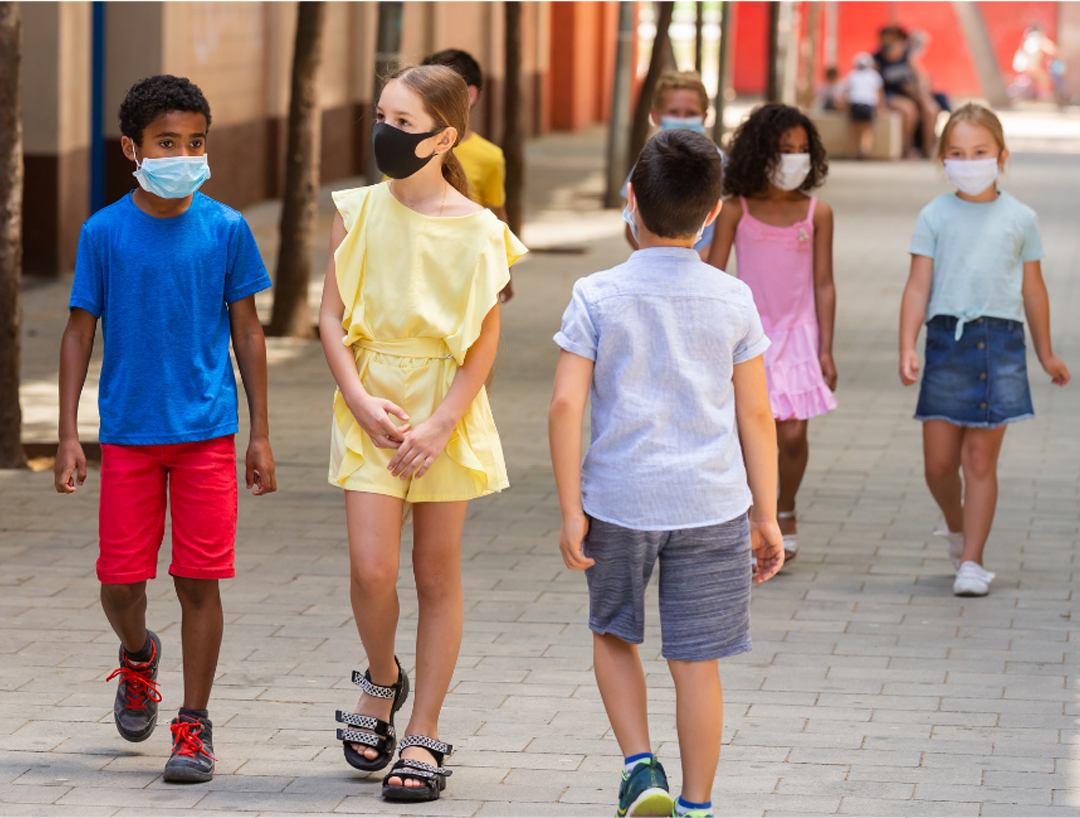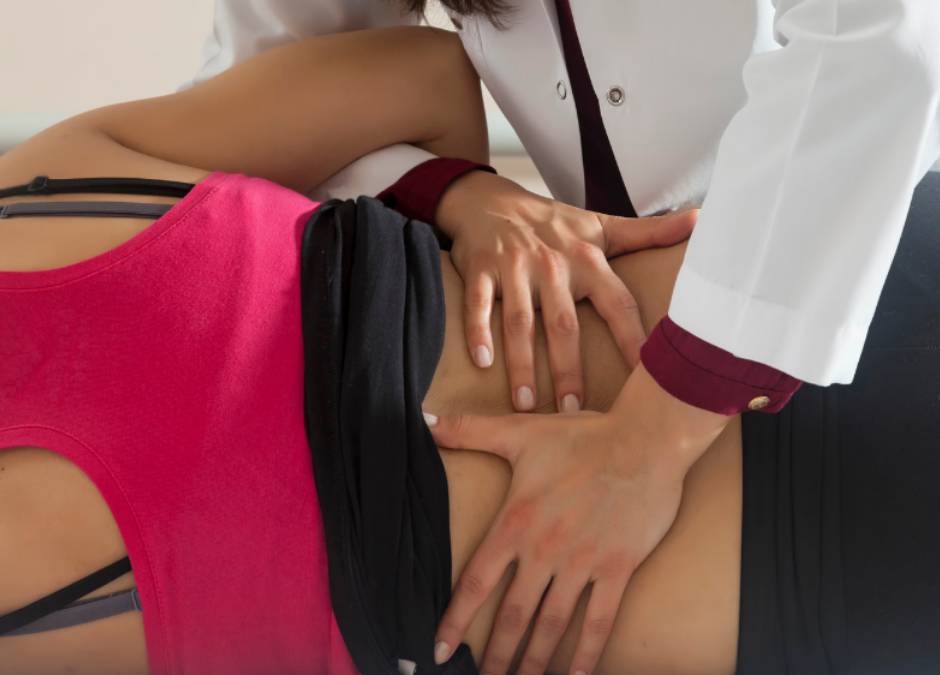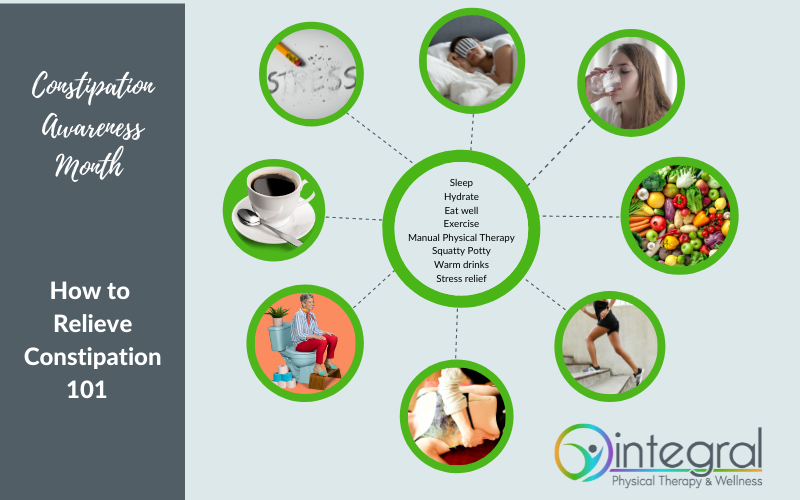Have you heard some myths about mask-wearing or do you have concerns about continued or prolonged mask use? Let’s talk this week about which myths we can debunk and which we can verify, and let me allay your concerns. Then, next week, watch out for an awesome post on the use of a special tool that can help you strengthen your respiratory system, which can help you if you do get sick because you will have better breathing capacity, a stronger cough, and better airway clearance as a baseline. Plus, strengthening your diaphragm and breathing system can help everything from pelvic floor dysfunction to back or neck pain to constipation!
As a breathing expert, I want to weigh in on the mask subject. Why am I a breathing expert? Many people may not be aware that breathing is an area of potential dysfunction and also rehabilitation that some specialized PTs treat. I have extensive training in breathing dysfunction and rehabilitation. You can read more about that in my breathing blog post. Throughout the Covid-19 pandemic, I have been in contact with my PT colleagues all over the world regarding the acute and post-acute breathing difficulties associated with the virus. It is a brilliant, collaborative, and humble community of therapists, many of whom are serving on the frontlines in the ICU setting. It was started by breathing expert Mary Massery, PT, DPT, to whom we all owe a huge debt of gratitude for her pioneering work in the understanding of breathing and postural control. Recently she jumped into the middle of a series of questions about mask-wearing. Many of us in community settings feel compelled to share our knowledge but hesitate due to the political nature that the mask debate has taken on. I live in Georgia, which is even worse than some other states. I credit Dr. Massery and other colleagues for gathering the list of resources below. There are dozens of similar studies. That takes us to the 1st potential myth …
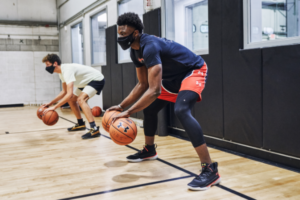 Does wearing a mask decrease my oxygen supply?
Does wearing a mask decrease my oxygen supply?
Mostly no, but infrequently yes, to a small degree. For the vast majority of people, oxygen saturation levels are totally normal when wearing a mask. If somebody has a compromised respiratory system, say due to COPD (chronic obstructive pulmonary disease), in theory, they may have a slightly harder time wearing a mask because their respiratory system is already compromised and does not have the capacity to tolerate the mask. This situation, however, is pretty rare. The study linked below showed that gas exchange was just fine in individuals with COPD wearing masks during walking. Next time your teenager complains, you’ll know it’s just drama. Even patients with cystic fibrosis do quite well with masks during moderate-intensity exercise, which I have seen while treating them. Elite athletes will actually train in masks in order to strengthen their respiratory systems.
I have experienced a big increase in my mask tolerance from June when I reopened my clinic and had to start wearing a mask for 6-8 hours a day to now. At first, I would actually feel respiratory muscle fatigue at the end of the day. But now I have no issues. Basically, we are strengthening muscles when we wear masks. I actually have my kids wearing masks during sports, as do several ATL area physicians that I have talked to, including pulmonologists, immunologists, and allergists. Mask wearing increases the work of breathing (WOB), which is why it feels harder to breathe for some people. Masks add resistance to the process. But it’s just like adding weight to an exercise, the muscles adapt and get stronger.
If you find breathing in a mask difficult, then you probably have some limitation in your breathing patterns that could be improved. It could just be muscle stiffness limiting your inhalation capacity, or a breathing pattern or postural habits impacting your breathing that could be improved with PT. Check out the video I will be posting next week for more tips.
I might rebreathe too much carbon dioxide?
Nope, your blood gas levels are just fine. Lots of studies support this, even during intense exercise. You might feel a little lightheaded if you are attempting a HIT workout in a mask, but again, it’s an issue of working up to tolerance.
Isn’t wearing a mask bad long-term?
This myth seems to be going around and I think, for the most part, it relates back to the gas exchange issue. No, there are no long-term gas exchange or pH issues associated with mask-wearing. However, because of the increased WOB, some people experience discomfort in the neck and shoulders due to overuse of accessory respiratory muscles. These muscles act to lift the ribcage to increase inhalation. The upper traps, scalenes, and sternocleidomastoids in particular (commonly overused for many reasons, not just breathing) may feel sore or develop painful trigger points from overuse in people who wear masks a lot. This situation is more pronounced if there are also posture issues or breathing capacity limitations. If it persists, PT can resolve that for you. Good neck, spine, and shoulder stretching can also help. Or,a good massage, which we probably all need right now.
You might also notice some jaw discomfort if you have to wear a mask often, and I find that it usually relates to the fit of the mask. If a mask doesn’t fit well, then the lower jaw tends to protrude to stabilize the mask on your face, leading to overuse of the jaw muscles and possibly some TMJ issues or muscle discomfort. Again, PT can help with that. But also, make sure your mask fits well and try to be mindful of avoiding that jaw movement.
Can’t wearing a mask make me sick because it’s full of germs?
Well, this one might be true if you aren’t caring properly for your mask. It’s important not to keep touching it while you are out in public or  you could transfer germs from a surface or doorknob to your mask, and then to yourself (e.g. you get in the car after grocery shopping, sanitize your hands then take your mask off, which is germy because you touched it repeatedly in the store…oops! Reverse that order, take it off, and store it in a baggie that says “dirty masks” in your purse or car, then sanitize your hands. I actually sanitize when I get in the car, then take off the mask and store it, then sanitize again).
you could transfer germs from a surface or doorknob to your mask, and then to yourself (e.g. you get in the car after grocery shopping, sanitize your hands then take your mask off, which is germy because you touched it repeatedly in the store…oops! Reverse that order, take it off, and store it in a baggie that says “dirty masks” in your purse or car, then sanitize your hands. I actually sanitize when I get in the car, then take off the mask and store it, then sanitize again).
Another important thing to know is that your cloth mask needs to be changed at least daily and laundered (research shows it’s fine to wash it with your regular loads). One germ expert has demonstrated a cleaning method for masks by boiling them (which in my house might be safer since the laundry room is sometimes like a black hole, I fear masks may go the way of socks at some point). Watch Dr. Annie’s mask cleaning experiments to see how you can easily clean a batch of masks in the kitchen.
What about the early evidence that wearing a mask didn’t work?
Those were all bogus, to be honest, and were not high-quality scientific research. There’s only evidence in favor of wearing a mask as far as preventing the spread of this virus. There was fear at the beginning of the pandemic that the community would buy up all of the masks (just like toilet paper, ahem), and that caused public officials to put out statements to steer the community away from buying up masks that healthcare workers desperately needed. Basically, masks catch germs that you might be spewing out and prevent you from catching germs coming your way. Not only is it common sense, but it’s demonstrated many times over in the research. See a brief list of studies below.
Any type of cloth face covering can work, right?
Actually, no. A study from Duke showed that the gator style neck and face-covering actually increased the aerosolization of the virus. Bandanas, 1 ply masks, and gators are all out for this reason. Two-ply masks are now readily available and super cost-effective (can’t beat $4 for a 2 pack)! Studies show that 2 ply cotton masks from decent quality fabric work really well when everyone has one on.
If I’m more than 6 feet apart, I don’t need one, right?
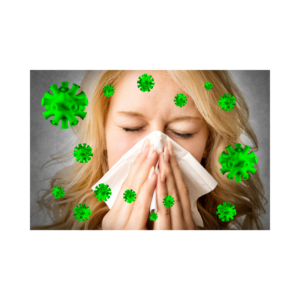 This actually isn’t true, although it’s a good distance to start with even when wearing masks. If a sick person coughs or sneezes, or if a person is vocalizing more loudly or singing, germs travel much, much farther. And linger in the air. If you are wanting to be safe and prevent the spread of Covid, don’t take your mask off in public spaces. Honestly, to get through this pandemic more quickly, we are going to have to unify as a country on this subject. One study from MIT (link below) showed that droplets from coughs and sneezes can travel dozens of meters (that’s 60-160 feet) in winter air conditions and can linger in the air for quite some time. I know, eww.
This actually isn’t true, although it’s a good distance to start with even when wearing masks. If a sick person coughs or sneezes, or if a person is vocalizing more loudly or singing, germs travel much, much farther. And linger in the air. If you are wanting to be safe and prevent the spread of Covid, don’t take your mask off in public spaces. Honestly, to get through this pandemic more quickly, we are going to have to unify as a country on this subject. One study from MIT (link below) showed that droplets from coughs and sneezes can travel dozens of meters (that’s 60-160 feet) in winter air conditions and can linger in the air for quite some time. I know, eww.
Wearing it on my chin works just as well, right?
I don’t even know what to do with these people. Please cover your mouth and nose! If it’s too short from chin to bridge of nose it will pull down and annoy you, plus leave those around you more vulnerable to your germs. Make sure you get one large enough to fit your face. But, it’s either an act of defiance to wear it on your chin, or else the type of ignorance that Jeff Foxworthy might tell a joke about.
My advice? Wear a mask, everywhere. The one time you don’t could be the time you get it or worse, give it. Covid-19 can be the gift that keeps on giving, as we see in patients with symptoms months later. If you are a parent, make your kid wear a mask! If you are a teacher, make your kids keep their masks on! If you are an authority figure or leader, demonstrate selflessness and wear the mask with humility and consistency. If you think that wearing the mask on your mouth but not your nose is good enough, think again. Let’s put others before ourselves and honor life by masking up. The pandemic will not last forever and will be over faster if we can limit its spread. Be a part of the solution, not the problem!
If you experience discomfort from wearing a mask either due to the increased WOB or secondary muscle discomfort, come see me. We can figure out where your limitations are and improve them which will not only help you wear a mask comfortably but also improve your capacity to fight future respiratory infections.
RESEARCH
Use of masks did not impact gas exchange for healthy individuals or those with COPD during activity
Wearing masks significantly reduces infection rate indoors
Milder or asymptomatic infection with use of masks
Masks reduce community spread
Ventilation is a key factor in reducing transmission, masks help
Coughs and sneezes send germs dozens of meters away, worse in winter air conditions

